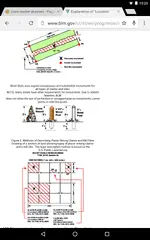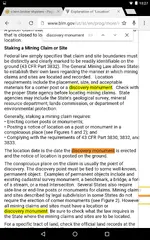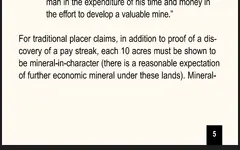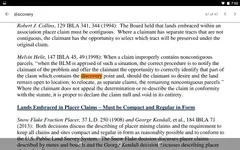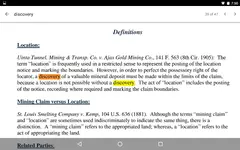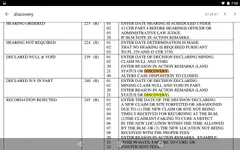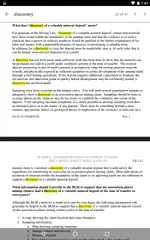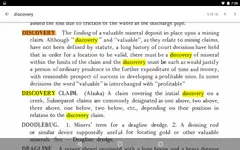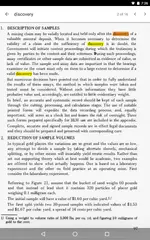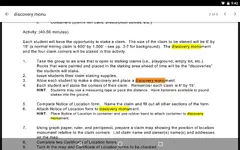When someone files a claim (or sells a claim) a discovery monument must be placed showing the place where the discovery of a valuable deposit is located.
In other words when someone sells a claim the valuable deposit must be monumented.
In other words on a placer claim there must be a discovery monument showing where the profitable pay streak is located. The monument is required for the claim to be valid.
This is where I was saying different states may be different. I will only be in New Mexico for the time being. This is taken from the New Mexico State Bureau of Mines and Mineral Resources book of Laws and Regulations Governing Mineral Rights in New Mexico.
Size of Claim
A placer
claim shall not include more than 20 acres for each
individual claimant, but there is no limit to the number of
claims that an individual or association of individuals may
locate.
A group of individual
s may locate an "association" placer
claim with a maximum of 160 acres. Thus two individuals may
locate an association placer claim of 40 acres, three individuals
60
acres, etc., up to a maximum of 160 acres by eight indi
viduals
in a single claim. However
, all locators must be bona fide. If
"dummy" locators are used, the validity of the claim may be
questioned.
Location
A placer claim
on public domain of the
United States within
the State of
New Mexico shall be loc
ated as follows:
1.
Make a discovery of placer material. Discovery of mineral
in
place in a vein or lode will not validate a placer location.
Only one discovery of mineral is required to support a placer
location, whet
her it be of 20 acres by an individual, or of 160
acres or less by an association of persons. However, in the event
of
a contest or in patent proceedings, such a discovery may not
conclusively establish the mineral character of all the land
within the clai
m. The locator may find it necessary to show a
discovery on each 10
-
acre subdivision.
2.
Post a location notice at a designated corner of the placer
mining claim, signed by the locator which contains the follow
-
ing. (A sample form for a placer location may be found on page
59.):
a.
The name of the claim.
b.
The purpose and kind of material for which the claim is
located.
c.
The names of the locators.
d.
The number of acres claimed.
e.
A description of the cl
aim by legal subdivision if located on
surveyed lands or a description by metes and bounds, with
reference to some known object or monument if located on
unsurveyed lands.
As the bold part says, in New Mexico you put the location notice on the corner of clain, not the mineral location. So, your one size fits all does not apply.




